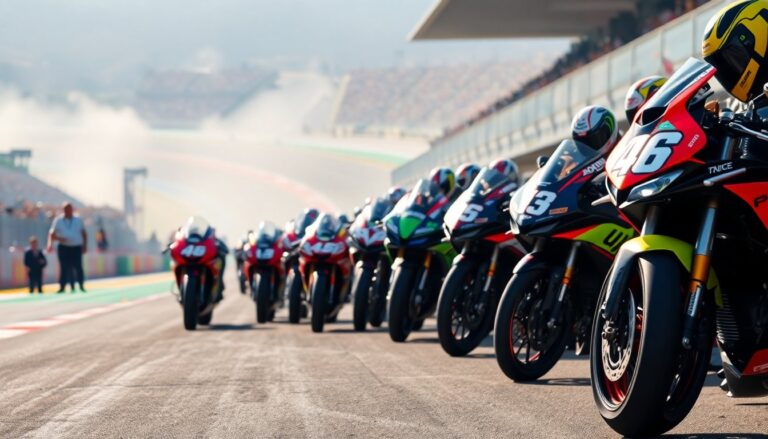Argomenti trattati
Exploring the world of MotoGP
MotoGP represents more than just a sport; it embodies a thrilling combination of speed, strategy, and exceptional riding skill. As the premier class of motorcycle racing, it draws top riders and leading manufacturers from around the world. This article provides an in-depth look at the fascinating history of MotoGP, the cutting-edge technology that powers these machines, and the competitive teams that battle for supremacy on the racetrack.
History of MotoGP
The origins of MotoGP date back to the early 20th century, with the inaugural race taking place in 1949. Initially branded as Grand Prix motorcycle racing, it has transformed into the prestigious championship known today. The name change to MotoGP occurred in 2002, heralding a new era focused on technological innovation and heightened competition.
Throughout its history, MotoGP has featured iconic figures such as Giacomo Agostini and Valentino Rossi. Their significant contributions have profoundly influenced the sport’s development. The series has expanded its global reach, hosting races at legendary circuits across Europe, Asia, and the Americas, captivating motorsport enthusiasts across the globe.
The evolution of competition
The evolution of the sport has significantly transformed the competition format. The introduction of the four-stroke engine in the early 2000s marked a turning point, revolutionizing both performance and racing strategies. Each season, teams invest substantial resources in research and development to enhance their bikes, intensifying rivalries on the track.
Today, MotoGP features multiple classes, such as Moto2 and Moto3, creating a structured pathway for aspiring riders. This system not only nurtures emerging talent but also generates excitement and anticipation for the main event—MotoGP.
Teams and manufacturers
The diversity of teams and manufacturers in MotoGP adds to its excitement. Notable contenders include Yamaha, Honda, Ducati, and KTM. Each manufacturer showcases distinct engineering capabilities that enhance the competitive landscape. Substantial investments in bike development are made to maintain their edge in racing technology.
Team dynamics significantly influence a rider’s success. Collaboration among engineers, mechanics, and riders is essential for achieving peak performance on race day. Each team adheres to strict regulations established by the Fédération Internationale de Motocyclisme (FIM), which outlines the technical specifications for the bikes.
Rider profiles and rivalries
The current roster of riders features notable names such as Marc Márquez, Fabio Quartararo, and Pecco Bagnaia. Their distinct riding styles and abilities foster intense rivalries that captivate fans. For example, Márquez’s aggressive approach contrasts sharply with Quartararo’s smooth technique, providing an enriching viewing experience.
These rivalries significantly enhance the sport’s appeal and raise performance standards. Each rider strives to surpass their competitors, pushing the boundaries of what can be achieved on two wheels.
Technological advancements in MotoGP
The innovations in MotoGP technology are remarkable. Modern motorcycles come equipped with features like traction control, anti-lock braking systems (ABS), and sophisticated telemetry systems that deliver real-time data to teams. This technology enables riders to make informed decisions during races, significantly improving their chances of victory.
Moreover, the incorporation of lightweight materials such as carbon fiber and aluminum allows manufacturers to design bikes that are not only fast but also robust. The relentless pursuit of speed drives advancements in aerodynamics, which is essential for achieving higher top speeds and enhanced cornering performance.
The future of MotoGP
The future of MotoGP is looking bright as the sport embraces sustainability. Plans are underway to integrate electric motorcycles into the racing lineup. This initiative aligns with the global shift towards environmentally friendly technologies and aims to engage a new generation of fans.
Additionally, MotoGP is broadening its global footprint. The calendar is set to include more races, and media coverage is on the rise. This expansion ensures that the thrill of MotoGP racing remains accessible to fans worldwide, reinforcing its status as a leading motorsport event.
MotoGP exemplifies a captivating blend of speed, technology, and teamwork. As the sport evolves, it continues to showcase human ingenuity and the relentless pursuit of excellence on two wheels.

